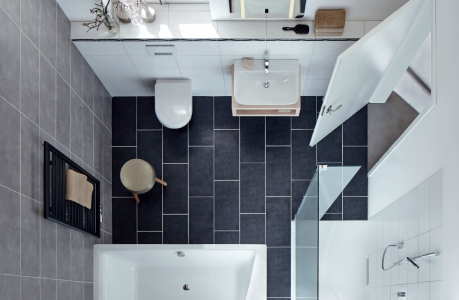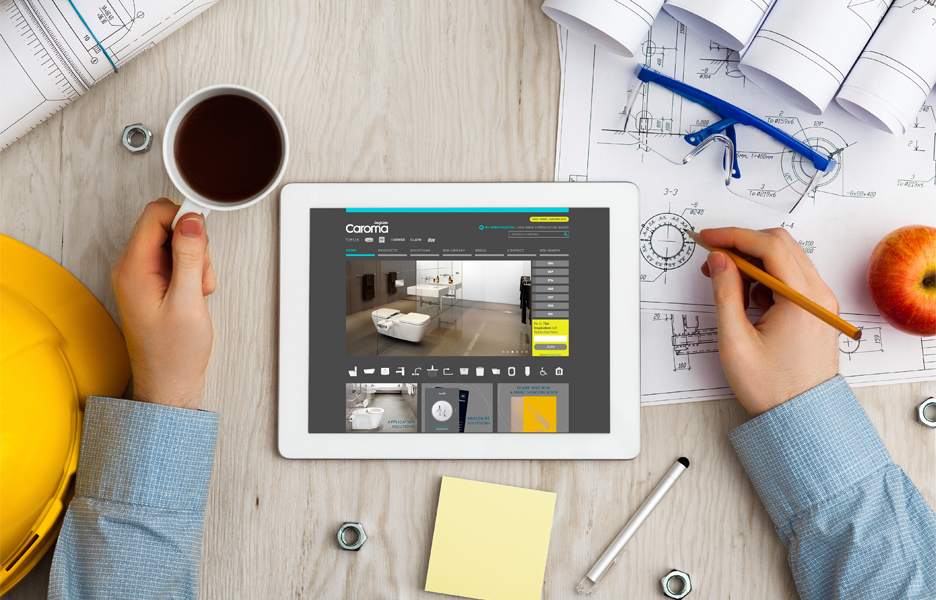
Growth typologies – specifying for an ageing population
Growth typologies – specifying for an ageing population
Share
Ageing is inevitable and, as more and more of us do so, its costs, and social and personal impacts have become big issues. How far is it possible to take the age out of ageing in specifying for present and future populations?
And how can architects address these concerns while taking advantage of this ever-growing market for their businesses?
Let’s stay optimistic. Specify wisely and you can assist seniors to be positive, fit, healthy, physically and mentally, to find a liveable balance even if not becoming a myth-making superhero as with that ‘alpha-gran’, Jane Fonda.
After the devastating 2019 interim report of the Royal Commission into Aged Care Quality and Safety (final due next November) Australian Prime Minister Scott Morrison announced funding for an additional 10,000 high-level homecare packages. At $496.3 million it still nowhere near covers the scale of the demand, but reflects the pressure to respond in a field apparently dominated by two extremes: horror stories of abuse and neglect, mostly institutionalised, on the one hand, and a fruitful later life, characterised by abundant health, wealth and happiness, on the other.
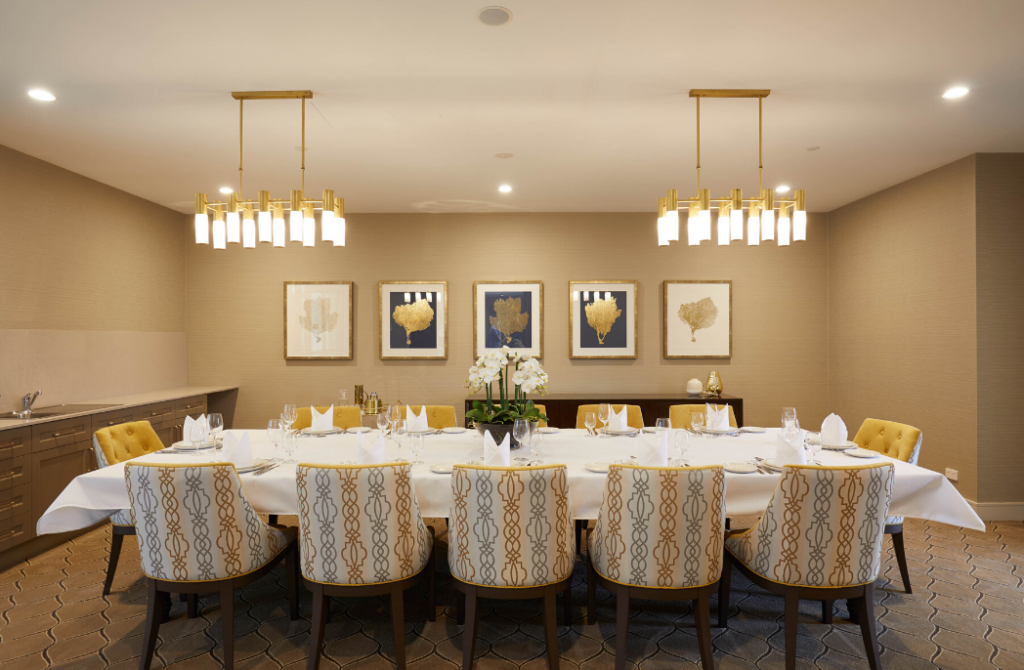
As Gill Walker, managing director of Evergreen, a communications consultancy specialising in the 50-plus, observes, “If you have enough wealth, then retirement equals freedom and enjoyment. Just as if you are poor, then retirement equals stress and worry.”
One size does not fit all
Context is important. Diane Jones, executive director at PTW Architects, has worked widely in Asia. She notes the Singapore Government’s approach, which considers that ageing “starts as soon as you are born”.
Australian thinking is much more segregated. We build with specific family set-ups in mind rather than ageless parameters, even as these are being challenged, financially and design-wise, such as the idea that it is best for children not to live in apartments.
Surveys and anecdotes show that the vast majority of people want to age in place, staying in their own homes for as long as possible. Can we then design for, and choose products, for ordinary, residences that cater to an ageing population and may also serve more formal living arrangements and different operator models? Supply would benefit from economies of scale and, if considered holistically, could reduce and even eliminate the need for any later modifications.
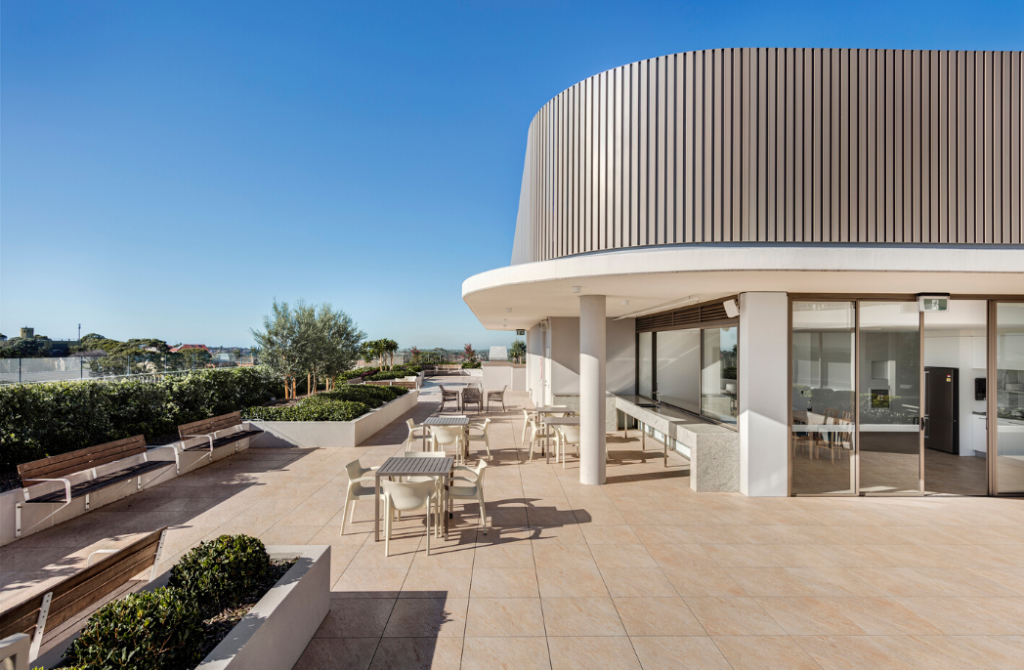
Hayball architects Fiona Young (Sydney Studio director) and Wei Yap Ooi (principal), who specialises in the healthcare and integrated seniors living sector, say they specify for “the level of care required, and model of care being proposed for the specific facility.
“The space should be independently designed to reflect the functional needs of the user while ensuring that it’s removed from a clinical setting and maintains a ‘home-like’ feel.
“For example, a resident with limited mobility will have a wider shower opening integrated into the design where the floor slopes down to the drain at a gentle gradient to accommodate an ease of transfer seat for wheelchair users.”
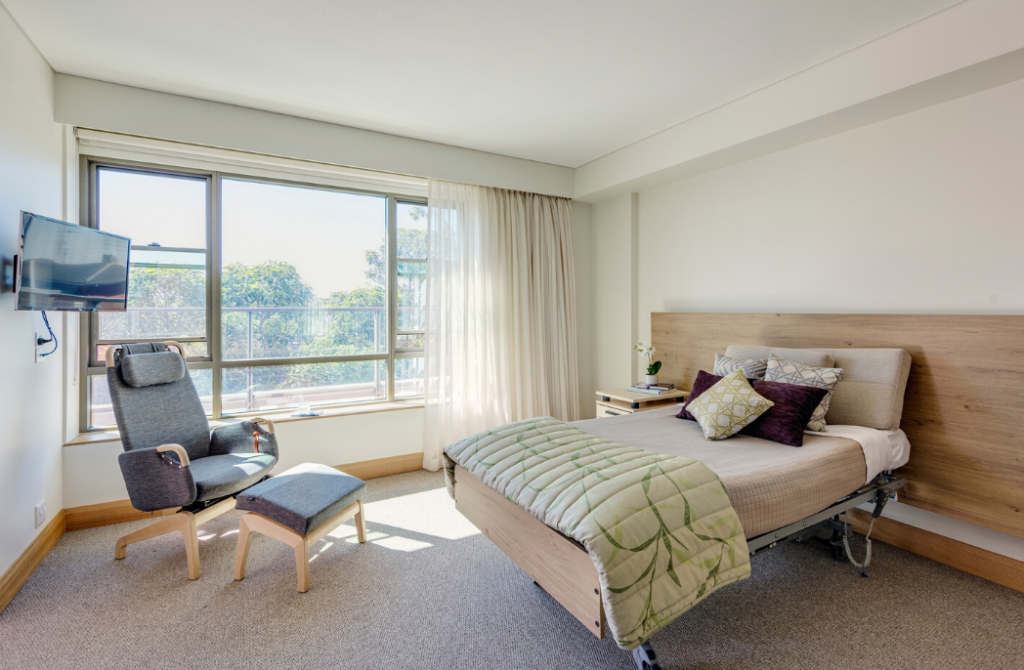
Importance of accessibility
Incorporating accessible features, such as adjustable bench heights, minimum door widths or a single level layout is voluntary only, says Dr Jane Bringolf, chair of the Centre for Universal Design Australia (CUDA). “This is in spite of a Council of Australian Governments move to instruct the Australian Building Codes Board to look at a Regulatory Impact Statement for regulation of accessible features in all new housing.
“Universal design eschews chopping the population into segments with specific needs and wants and then making products just for them. It’s a big ask, but that is the vision.”
Aged care homes must also heed Aged Care Quality Standards, but Hayball architects are confident they can “accommodate the requirements with other regulations, design controls and building codes. Rather, Young and Ooi note the more practical ‘home away from home’ models that signify “a collective shift away from institutionalised design and move towards a holistic approach that balances the residents, investors and operators’ perspectives,” say Young and Ooi.
Innovative thinking combined with trust can bring a different perspective to the crucial issues of managing mobility and risk. Jones refers to an example, admittedly from the other end of the age spectrum, where an early learning adventure playground in Japan “does not have hand rails, but lets people climb and do all sorts of things using ropes, balance and how to assess and apply risk”.
This more residential approach reaches fabrics, too. Julie Ockerby, creative director and principal at Meli Studio, is a registered nurse turned international award-winning interior architect and designer. Her new Bespoke Collection has simple, tones and textures – anything but beige, she says.
“To be leading designers we rely heavily on our suppliers to continually develop products ahead of the trends,” she adds.
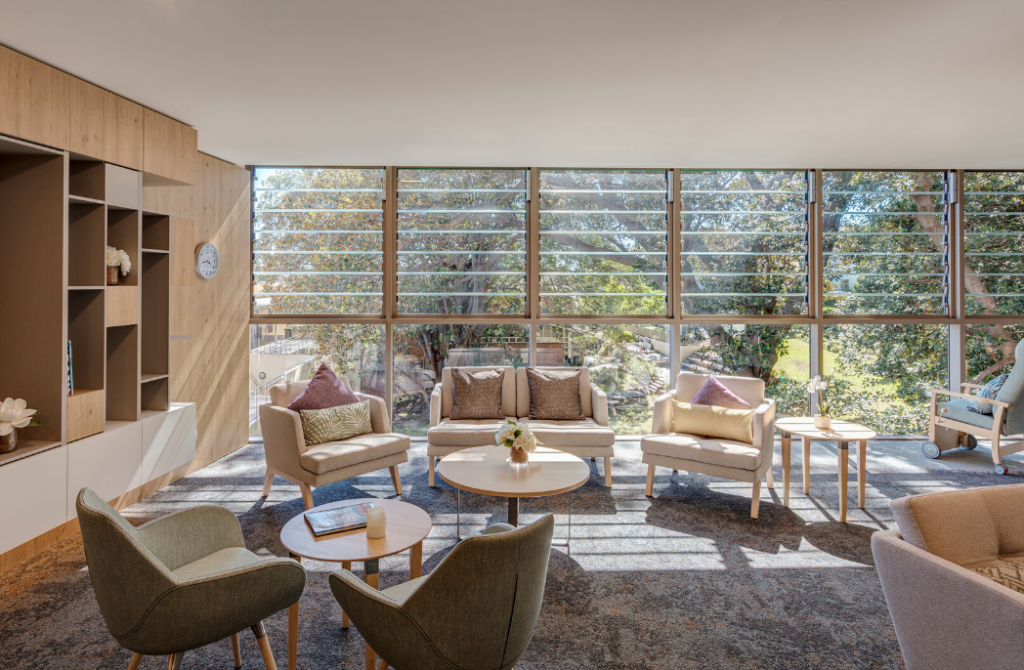
Contemporary responses for housing the aged
Guy Luscombe, architect and director at Architects Johannsen + Associates (AJA), Sydney, was recipient of a Byera Hadley Travelling Scholarship to study and talk to operators about contemporary responses to housing the aged in Europe. His New Architecture for the New Aged (NANA) project identified openness, light, a welcoming environment, balconies, a sense of the outdoors, small intimate details, a sense of belonging and freedom of choice with a variety of spaces, colours, textures and floor plans as being important. Engaging people, with designed activity and a sense of purpose, was another significant factor.
Ageing in place allows people to continue living the lives they are used to (as far as possible), and to be part of the community. After years of listening to and debriefing clients, PTW’s Diane Jones knows that aged care parameters benefit from not having preconceptions of what is required. “Choice is of massive importance, and giving people a sense of control,” she says.
This is something the research team behind bathroom manufacturer Caroma’s Wellbeing Aged Care range, found. The research was developed by the University of New South Wales’ (UNSW) Faculty of Built Environment and led by Home Modification Information Clearinghouse director, Professor Catherine Bridge as part of its Liveable Bathrooms for Older People project. The end user and target audience was closely involved.
The research, jointly funded by the Australian Research Council and manufacturing GWA Group, analysed older people’s physical dimensions and abilities to develop the best possible bathroom design solutions. They received over 4000 responses from people aged 60 to 90 and interviewed 80 people of different sizes, heights, ages and genders. The products were co-designed through workshops. Older people told their stories and aged care specialists listened.
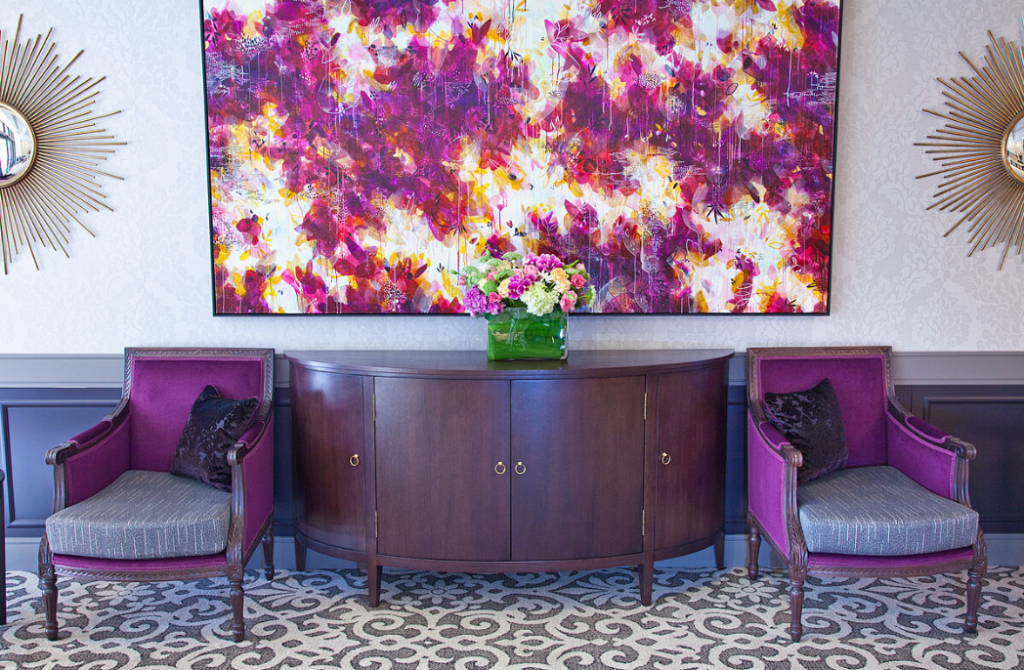
Industrial designer Dr Peter Sweatman has a PhD in user centred bathroom design for older and people and works with Caroma’s R&D department. “No one knows the details of the usability of the bathroom like someone in their 80s,” he says. “They say, ‘I shuffle in here; I put my towel on the floor because, if it falls, I can’t pick it up. I adjust temperature here, and make sure that I hold on now because I don’t want to fall’.”
One of the main results of the research was a toilet with a built-in armrest that goes up and down and with the ability to be locked.
Common ground in design and specification
Ockerby is optimistic that there can be overlaps between approaches to residential aged care and ageing in place. “It is a matter of changing the mindset and doing what is in the best interest of the resident. You must have considered design and part of that is involving the psychology of residents. Ageing in place is topical because I believe people still do not understand what it is. It is neither complicated nor can it be simple. It involves thought and respect.”
The ABC documentary Old People’s Home For 4-Year-Olds was shown in 2019 and widely praised for its tender filming of young and old learning and benefiting from each other’s company. Its popularity is perhaps a pointer to the potential for intergenerational living, just one of the ideas being mooted for the future.
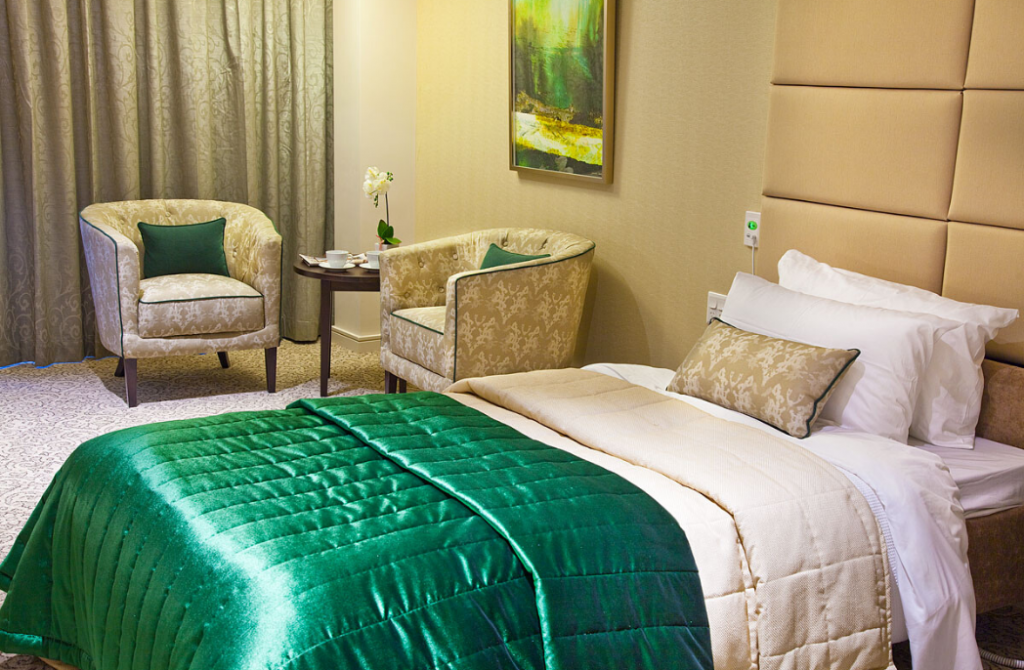
It is best not to make assumptions. For instance, do not dismiss everyday products, such as those from IKEA.
Gill Walker is the managing director of Evergreen Advertising and Marketing, which has many clients that serve the over 50s. She also praises IKE for its “age-neutral service in improved stores”. Perhaps unexpectedly, she has also found that “one’s attitude, experience, confidence and ability to see the benefits of tech (such as telehealth programs) are the determining factors to successful ageing.
“Those who see the benefits of tech and its constant evolution tend to age better,” she concludes.
Keep a level head
- Design appropriate spaces for different levels of care.
- Be led by residential needs while recognising compliance factors.
- Research, understand and empathise with the different population cohorts.
- Consider new ideas such as intergenerational living and integrate design features.
- Revolutionise access and safety with colour, texture and space.
- Be guided by compassion, community awareness, communication, memory and detail.
This article first appeared in AR163.
You Might also Like
